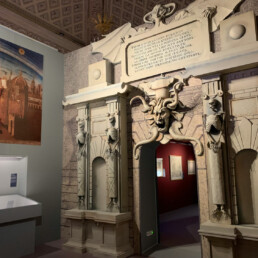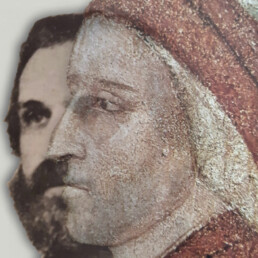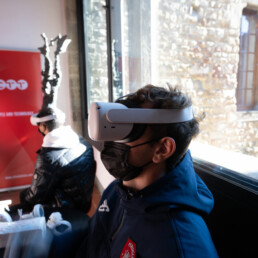“In the footsteps of Dante: Casentino in the Comedy”: the Uffizi brings Dante back to the castle where he wrote part of the work
Exhibition at the Poppi Castle from July 17 to November 30
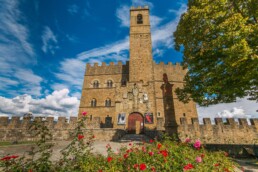
The medieval fortress of the Guidi Counts in Poppi, Casentino, hosts the exhibition titled “Nel Segno di Dante: Il Casentino nella Commedia”, the first exhibition as part of Terre degli Uffizi, an exhibition project by the Uffizi Galleries and Fondazione CR Firenze.
It serves as an artistic tribute, with works from the Uffizi Galleries, detailing Alighieri’s exile from Florence to the land that first welcomed him, the Casentino. Promoted and organized by the Municipality of Poppi, the exhibition welcomes a series of works dedicated to Hell, Purgatory and Paradise, to celebrate the fugitive poet.
In Casentino, Dante left tangible evidence. He came here as a fugitive seeking hospitality and protection. Dante was hosted in this area by local lords who were honored to welcome him, while he hoped for a return to his homeland that was never to be. The exhibition illustrates the historic facts, what happened and why. Various scholars from different fields worked on the exhibition which also reflects on themes that reveal how the figure of Dante has truly pervaded local history, helping to reveal the leading role of the Casentino in the human and cultural history of the Supreme Poet.
The works of the exhibition were chosen in relation to the three canticles of the Comedy: Hell, Purgatory and Paradise. The works from the Uffizi explore the love for Dante’s poem throughout history. Proof of this is the main work of the exhibition, the large nineteenth-century painting purchased by the Galleries last year on the occasion of the first Dantedì, Francesca da Rimini in Dante’s Inferno (1810), by the romantic artist Nicola Monti, as well as pastels by Beatrice Ancillotti Goretti (Marriage of St. Francis with Poverty, 1903). There are also four sixteenth-century drawings of the Commedia by Federico Zuccari, brought from Marche to Florence, and chosen to complete the frescoes in the dome of Santa Maria del Fiore, which remained unfinished when Vasari died.
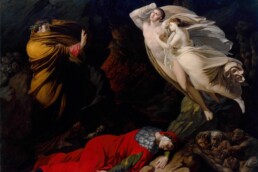
Dante in Casentino
During his exile, Dante Alighieri was a guest of the Guidi Counts at the castle of Poppi. Here, he composed the canto XXXIII of the Inferno. The fates of Poppi and Dante had also already crossed in 1289, when not far from the Castello dei Conti Guidi the twenty-four-year-old poet took part in the famous Battle of Campaldino in which the Guelphs and Ghibellines clashed.
Inside the castle, you can admire a large model that reconstructs the armies in the battle field.
It’s one of the most famous canti of the Divine Comedy, revolving around the figure of Count Ugolino della Gherardesca, whose daughter the count of this castle had married. The imposing appearance of the Poppi Castle is due to Arnolfo di Cambio, who seems to have built this castle before building the Palazzo Vecchio in Florence.
Since 2002, Poppi has been certified “One of the most beautiful villages in Italy” for its magnificent structure as a “walled city”, embodying centuries of artistic and architectural beauty, starting from the Middle Ages with the historic San Fedele Abbey, a veritable art gallery with paintings by Ligozzi and Morandini, among others. There’s also the imposing Castle of the Guidi Counts, known as the “castle of Dante Alighieri” given that it hosted him during his exile from Florence. Among highlights of the castle’s interior is the chapel frescoed by Taddeo Gaddi, Giotto’s first pupil, and the Rilliana Library that contains a wealth of over 25,000 centuries-old volumes, including illuminated manuscripts, incunabula, medieval and Renaissance manuscripts.
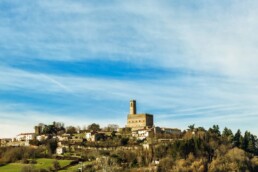
Trekking in Casentino to discover Dante
While immersed in the beautiful countryside of Casentino, you can discover many traces of medieval history. Travelling in Poppi, Camaldoli and La Verna, there’s also space for spirituality and devotion, to totally immerse yourself in the world of Dante. These are extraordinary places, with many spectacular trekking experiences to be enjoyed. Some routes are indicated on the Vie di Dante website, a project created by Toscana Promozione Turistica and APT Servizi Regione Emilia Romagna, to make the many paths that cross the two Regions accessible, and to help retrace Dante’s history.

